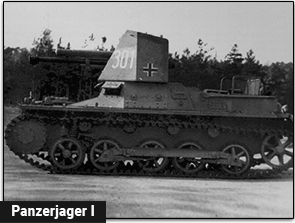Warspot.net is where history comes alive!
The dedicated site features articles about various aspects of military history and technology for readers of all interest levels.
Our authors include specialists who put a lot of effort into their articles. They tell you about little-known military conflicts, development and use of military vehicles, creation of iconic weapons, outstanding engineers, tactics of renowned commanders, heroic deeds of ordinary soldiers, and more.
Here is the Warspot Digest for August 2020—all this and more on Warspot.net!
Warspot Digest: August 2020
 |
StuG III in the U.S.S.R. At the start of the Soviet-German War, Soviet military intelligence and the G.A.U. (Main Artillery Directorate) had a very approximate idea about the types and characteristics of German tanks. This deficiency led to an overestimation of the possibilities of German armor and the launch of the KV-3, 4, and 5 programs in March of 1941. Even information on real German tanks was sparse. Intelligence missed the increase of the front armor of PzIII and PzIV tanks to 50 mm and use of 50 mm guns. This lack of information had to be made up for in the most reliable way during the war: studying trophies. Among the vehicles that were glossed over by Soviet intelligence was the StuG III assault gun. [READ MORE] |
 |
Renault D2: De Gaulle's workhorse The heavy Char B1 tank became the symbol of French pre-war tank building, and General de Gaulle is frequently associated with it. The 36 ton tank might have been the best French tank was indeed the best tank that France had during the fighting of May-June of 1940. The tank's thick armor worked well, even though the concept of the tank was obsolete. Interestingly enough, mass production of the Char B1 might never have happened, since the French military was considering a different tank for the role of their main tank in the early 1930s, with the same armament, same armor, but more than 1.5 times lighter. This was the Renault D2, the tank that Colonel De Gaulle served in. [READ MORE] |
 |
Sherman Firefly: Modernization in the British style Great Britain, the nation that was first to invent the tank, lost its first place in tank building by the end of WWII. Nevertheless, the British designed the 17-pounder, a first class tank gun, and put it to good use on a number of vehicles, both domestic and imported ones. The most famous such vehicle was the Sherman Firefly. [READ MORE] |
 |
Panzerjager I: Small, but fierce One of the distinguishing characteristics of German tank building in WWII was an aim to use up obsolete vehicles, including those which used to be the backbone of the German tank force. If a German tank became obsolete, that didn't mean that it would be scrapped. Some tanks were sent to training units, other were modernized. Obsolete tanks, especially light ones, were often converted to SPGs or engineering vehicles. This was the fate that awaited the PzI, Germany's first mass produced tank, which was already obsolete at the start of WWII. [READ MORE] |
